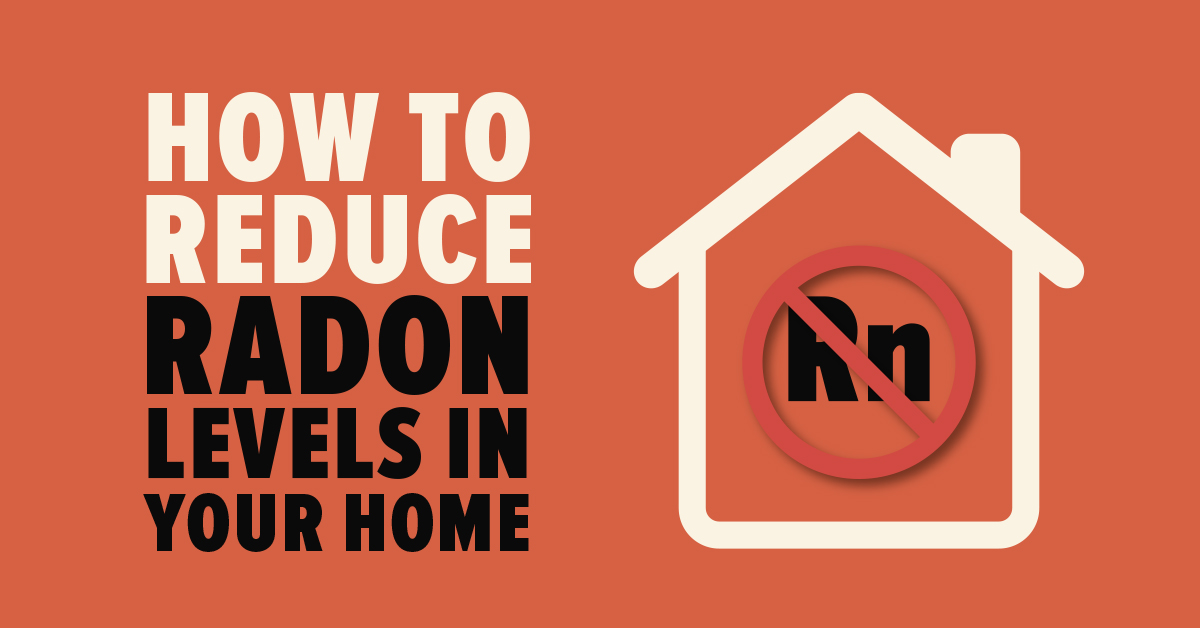How to Reduce Radon Levels in Your Home

When the radon levels in your home exceed Tennessee guidelines, stating 200 becquerels/m3, it’s time to seek professional help in reducing radon levels to an acceptable measure. The higher the radon levels, the more urgent it is to remediate.
According to a National Research Council report for the Environmental Protection Agency (EPA), eliminating radon gas entirely from your indoor living environment is not possible. The report explained that a third of lung cancer cases caused by radon exposure could be prevented if homes met the Canadian guideline.
The following are tips to help you reduce radon levels in your home so that they’re at safe and acceptable levels:
- Increase the ventilation in your home to allow the air to properly circulate. You might want to try increasing mechanical ventilation through a heat recovery system (HRV) to permit air exchange.
- Seal all cracks, holes, or openings (water, sewer, electricity, etc.) in the foundation walls and floors (basement). Also, seal the joints between walls and floors and the gaps around pipes and drains (i.e. all the vents through which radon gas can possibly enter your house).
- Cover sump pumps and drains (keeping in mind, of course, that this does not prevent their functioning).
- Replace your basement floors (particularly earth floors) with concrete floors. This reduces the risk of radon gas entering your home.
- Use the most common method of reducing radon levels – a fan and piping that draws radon from indoors and expels it out. This method is commonly referred to as sub-slab depressurization, and it expels radon before it enters your home.
- Install specially-designed traps in floor drains to prevent radon from entering your basement.
- Basement sub-floors can be ventilated by installing a small pump. This will draw the radon gas below the concrete slab to the outside.
- Install an active soil depressurization (ASD) system, which will reduce the concentration of radon in the soil next to your home’s foundation.
- Paint your basement floors and walls. Don’t forget to use a sealant on top of the paint and to add polyethylene sheets to the basement walls.
- In extreme cases, such as when unacceptable levels of uranium are found in the soil around your house, remove the soil and replace it with clean fill.
- New homes with radon-resistant features should be built following radon-resistant construction techniques, which are simple and inexpensive.
Radon Reduction Tips for New Homes
There are a number of ways you can reduce radon in new homes:- Use highly resistant concrete
- Add plasticizer to the concrete
- Install a polyethylene membrane under the concrete
- Install a balanced ventilation system
- Install a pipe that runs across the concrete slab in case you need to install a depressurization system in the future.
- Make sure that your new home is being built following the 2010 new national building codes.
Finding a certified, trained and experienced professional in your city is the best and most reliable way to ensure that your home is not at risk of dangerous radon levels. Because each home is unique in its structure, its location, and therefore, its vulnerability to radon gas entry, testing and reduction should be done by trained and experienced professionals, who can also provide useful advice for the occupants’ future safety.

Radon is the second leading cause of lung cancer, causing an estimated 21,000 deaths in the United States annually. Unfortunately, Tennessee is a hotbed for radon.
Radon levels are measured by units of radioactivity per volume of air, called picocuries per liter (pCi/L). The EPA recommends treating homes with any level over 4.0 pCi/L. In Tennessee, 31 counties are listed as ZONE 1, meaning homes there are likely to have levels higher than 4. These include most Middle and East Tennessee counties. Call us today for a quick and effective solution to your radon problem.

Useful post it is. Radon is a radioactive gas that can be found in homes and buildings, and it's the second leading cause of lung cancer in the United States. Radon is colorless, odorless, tasteless, and hard to detect. >> how long does it take a radon mitigation system to work
ReplyDelete